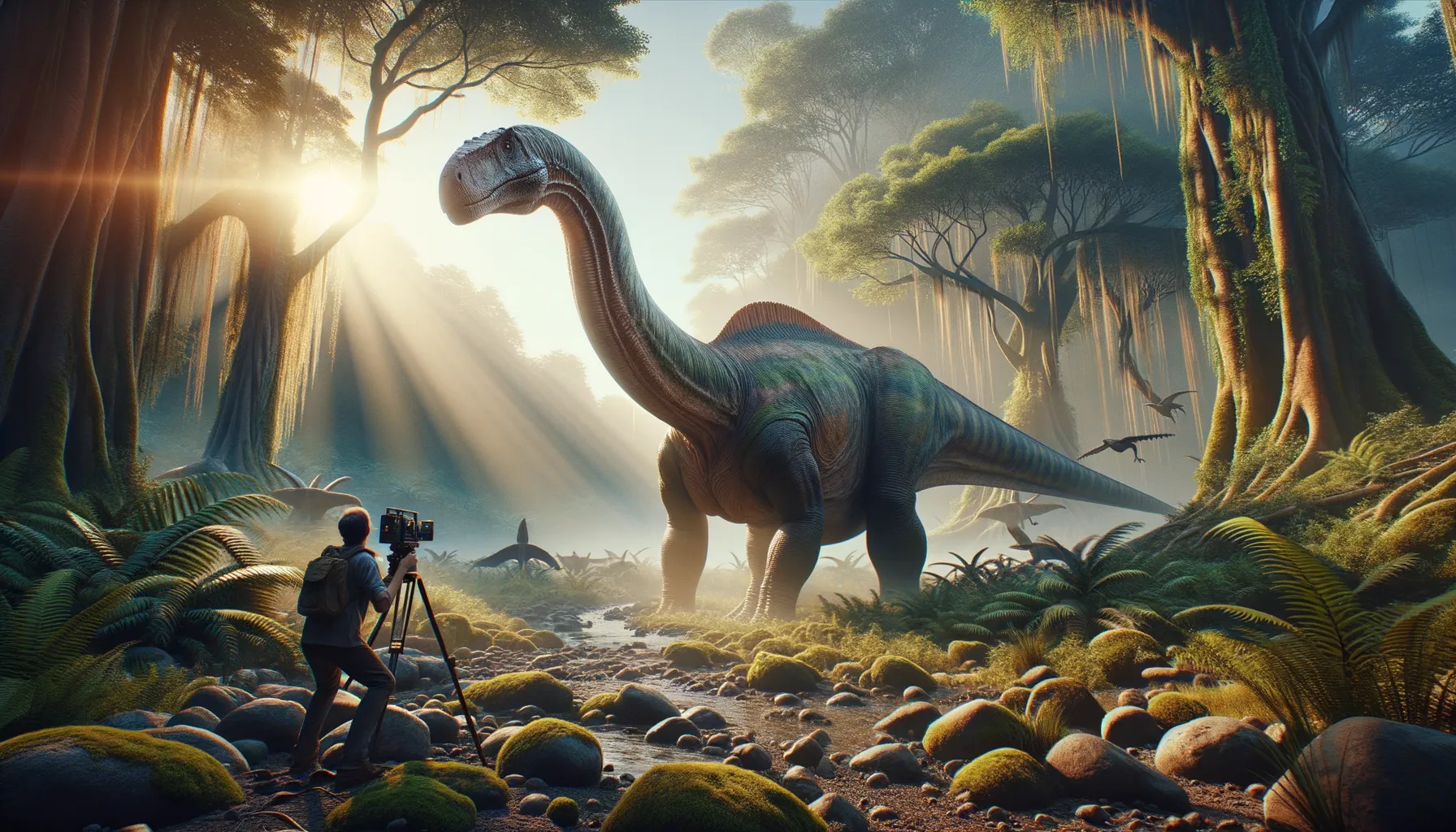
Kaatedocus
The gentle giant of the Jurassic era!
Period
Jurassic
Length
Roughly 15 meters long.
Height
Approximately 5 meters tall.
Weight
Around 2 to 3 tons.
Kaatedocus was a long-necked dinosaur that roamed the Earth during the late Jurassic period. It was part of the Diplodocidae family, known for its elongated neck and tail. With a relatively lighter build compared to its relatives, Kaatedocus was adapted for a herbivorous diet. Its remains have helped paleontologists understand sauropod anatomy and behavior, marking an important discovery in dinosaur studies.
Diet
Kaatedocus was a herbivore, feeding primarily on lush vegetation such as ferns and conifers. Its long neck allowed it to reach high into trees to access leaves that other herbivores could not. As a sauropod, it likely relied on its massive size to process large amounts of plant material efficiently.
Hunting
Being a herbivore, Kaatedocus did not engage in hunting. It likely spent its time foraging and moving between areas with abundant plant life. Its physiology was adapted to a peaceful, non-predatory lifestyle, avoiding confrontation with carnivorous species.
Environmental challenges
Kaatedocus lived in a period with significant volcanic activity, which occasionally altered its habitats. It had to adapt to fluctuating environments with periods of drought and lushness, impacting its food sources. Predation from large theropods also posed occasional threats, especially to younger or weaker individuals, necessitating some forms of defense or group behavior for protection.
Speed
Moderate pace suitable for a large herbivore.
Lifespan
Estimated to be several decades.
First discovery
First discovered in the Morrison Formation in Wyoming.
Fun Facts
- Kaatedocus was a small sauropod dinosaur that lived during the late Jurassic period, around 150 million years ago.
- It was first discovered in northern Wyoming, in the United States, in the Morrison Formation, which is famous for its rich dinosaur fossils.
- Kaatedocus is known for its unusually small skull compared to other long-necked dinosaurs, making it look quite unique.
- This dinosaur had a long neck and a relatively light and agile body, allowing it to reach high vegetation that other herbivores couldn't.
- The name 'Kaatedocus' means 'small beam', referring to its lightweight skeletal structure.
- The discovery of Kaatedocus helped paleontologists better understand the diversity and evolution of sauropods in North America.
- Despite its large appearance in terms of structure, Kaatedocus was relatively small for a dinosaur, measuring about 9 to 12 meters in length.
Growth and Development
Kaatedocus, like other sauropods, grew rapidly in its early years to decrease vulnerability to predators. As it matured, its growth slowed but continued steadily over its lifespan, resulting in a massive size that was beneficial for reaching food. Fossil evidence suggests it had a unique growth pattern with a distinct bone structure differing from its relatives.
Habitat
Kaatedocus thrived in semi-arid environments with seasonal rainfall, providing access to water and nutrition. Its habitat comprised floodplain ecosystems with plenty of vegetation. The presence of rivers and open areas allowed these giants to form large herds, enhancing their protection and ease of finding food.
Interaction with other species
Kaatedocus coexisted with various theropod species, which were potential predators. It often moved in groups to reduce the risk from these carnivorous dinosaurs. Evidence also indicates interactions with other herbivores as they shared the same foraging grounds, leading to competitive and cooperative behaviors.
Natural lifespan
Kaatedocus is believed to have had a lifespan of several decades in the wild.
Reproduction
Kaatedocus likely laid eggs in communal nesting sites, a strategy used by many sauropods to enhance hatchling survival rates. The young ones possibly grew quickly, staying in protective groups until they reached a less vulnerable size. Parental care remains a mystery, but young sauropods may have been cared for in a manner ensuring the continuity of the group.
Social behaviour
Kaatedocus likely moved in herds, a social strategy to fend off predators and overwhelm potential threats. Such group behavior also facilitated the search for food and water over extensive terrains. Social structures could have included complex hierarchies based on age and size, with older individuals leading the group.
Fossil locations
Fossils of Kaatedocus have been primarily found in the Morrison Formation, which spans across several states in the western United States. These discoveries have provided significant insights into sauropod anatomy and evolution. The distinct remains continue to attract interest for further paleontological research on Jurassic dinosaurs.
